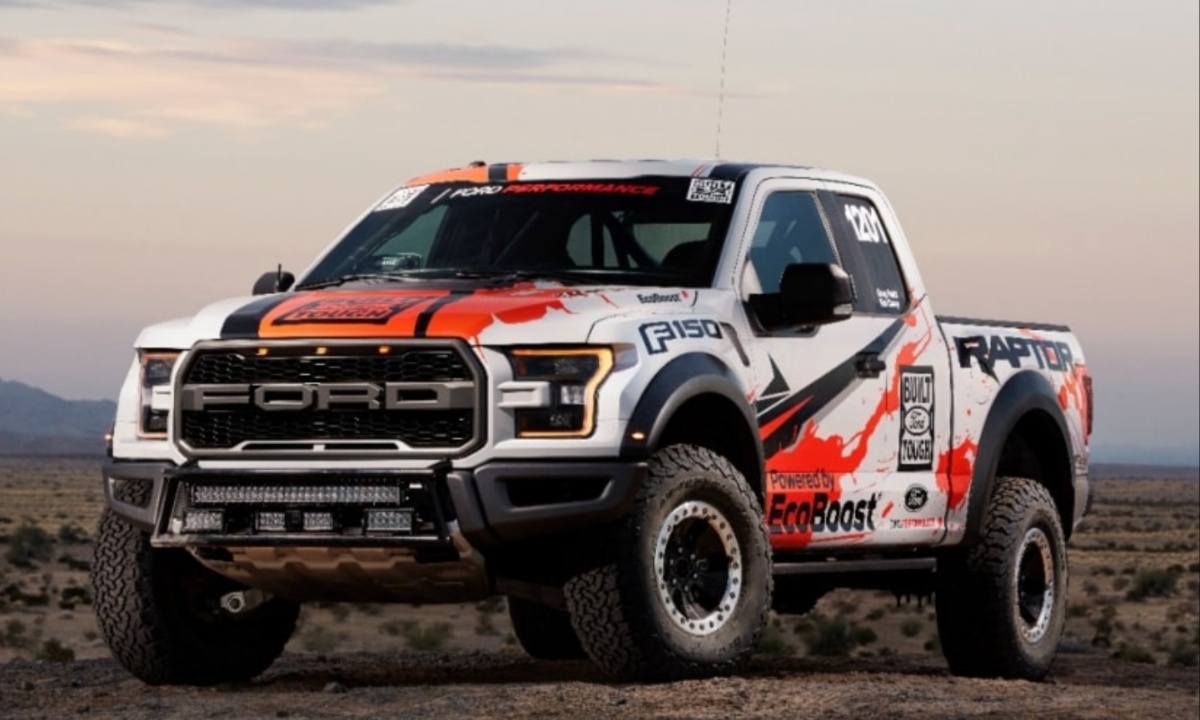Few nameplates in automotive history carry the weight, legacy, and reputation of the Ford F-Series. As America’s best-selling truck line for over four decades, the F-Series has built its identity on toughness, capability, and long-term dependability.
From farms and job sites to suburban driveways, these trucks are everywhere—and for good reason. But while many F-Series models truly earn their reputation for lasting forever, not all have lived up to the hype.
The truth is, not every Ford truck is built equal. Over the decades, Ford has produced F-Series models that have become legends—known for racking up hundreds of thousands of miles with minimal repairs.
These trucks are celebrated for their rock-solid engines, durable transmissions, and frames that take abuse without breaking. But mixed in are years and trims that didn’t hold up—plagued by design flaws, underdeveloped engines, and reliability issues that left loyal owners frustrated.
In this feature, we’ll look at both sides of the F-Series coin. First, we’ll showcase five F-Series models that last forever—trucks that mechanics trust and owners swear by.
Then we’ll dig into five F-Series that constantly fail, exposing the weak links in Ford’s otherwise proud pickup legacy. Let’s start with the workhorses that keep on working.
Also Read: 5 Retired Models That Increased in Value and 5 That Didn’t
5 Ford F-Series That Last Forever
When it comes to pickup trucks that go the distance, certain Ford F-Series models have earned a place in automotive folklore. These trucks aren’t just dependable—they’re nearly indestructible.
Whether it’s a fleet workhorse hauling concrete or a rancher’s daily driver tackling dirt roads and trailers, some F-Series trucks have been engineered so well that they routinely cross 300,000 miles with little more than basic maintenance.
What makes these particular trucks so resilient? It’s a combination of simple, overbuilt engines, bulletproof transmissions, and old-school mechanical components that resist wear.
While newer models chase luxury and technology, the most long-lasting F-Series trucks were built during an era when durability mattered more than touchscreen size.
Steel frames, heavy-duty axles, and proven V8s or inline-sixes made them virtually unstoppable when properly cared for.
Another key factor is repairability. The most reliable F-Series trucks are easy to work on, with widely available parts and simple layouts that don’t require a degree in computer science to service.
This keeps them on the road longer and in better condition, even after decades of use. These trucks also benefit from huge aftermarket support, allowing owners to keep them running well beyond their original design lifespan.
This list of five Ford F-Series models that last forever is based on mechanic surveys, owner reports, and real-world mileage records.
These aren’t just good trucks—they’re the trucks that tow, haul, idle, and repeat every single day without complaint. They’re found on farms, in small-town garages, and in fleets that trust them to start no matter the conditions.
Whether you’re looking to buy a used workhorse or just want to appreciate the best of Ford’s engineering, these are the F-Series trucks that keep showing up—mile after mile, year after year.
Let’s begin with one of the most legendary long-haul Ford trucks ever built.
1. 1999–2003 Ford F-250/F-350 Super Duty (7.3L Power Stroke Diesel)
If there’s one Ford truck that has reached near-mythical status for reliability and durability, it’s the 1999–2003 Ford F-250 and F-350 Super Duty equipped with the 7.3-liter Power Stroke diesel engine.
Known in truck circles as the “million-mile motor,” this powerhouse is the gold standard for long-lasting Ford pickups—and arguably for the entire heavy-duty segment.
The 7.3L Power Stroke is an International-built, turbocharged V8 diesel that prioritizes strength and longevity over outright speed.
It uses a HEUI (Hydraulically-actuated Electronically-controlled Unit Injector) fuel system, which, while complex on paper, proved incredibly robust in real-world use.
These engines are known to regularly surpass 400,000–500,000 miles with only routine maintenance, and some fleet examples have pushed beyond 1 million miles.
Paired with either a rock-solid ZF-6 manual transmission or the stout 4R100 automatic, the drivetrain is a model of bulletproof engineering.
There’s no emissions equipment to worry about (pre-DPF, pre-EGR complexity), and very few electronics to fail, especially compared to modern diesel trucks. In other words, it’s a mechanic’s dream and an owner’s blessing.

The Super Duty platform itself was equally overbuilt. With a fully boxed frame, Dana axles, and a serious suspension setup, these trucks were designed for punishing workloads. Whether you were towing 12,000 lbs daily or plowing snow for ten winters in a row, the truck just kept coming back for more.
Parts are still widely available, and because of the truck’s cult following, there’s an active aftermarket community offering everything from upgrades to restorations. Whether it’s turbo enhancements or bulletproofing mods, this truck is easy to keep running forever.
Owners rave about how the 7.3 feels “unbreakable,” and that’s not hyperbole. It’s one of the few Ford trucks you’ll routinely see still working hard with faded paint, rusted rockers, and 300K+ on the odometer—and it’s still being used to tow.
If you’re looking for a true workhorse that won’t quit, the 1999–2003 Super Duty with the 7.3L Power Stroke is the Ford F-Series model to beat. It’s the kind of truck people buy, keep, and pass down—not because it’s trendy, but because it’s trusted.
2. 1992–1996 Ford F-150 (Inline-6 4.9L or 5.0L V8)
In an era before pickups became luxury cruisers, the 1992–1996 Ford F-150 stood out as a true blue-collar truck—honest, straightforward, and built to last.
It was the last of the “old-school” Fords before major styling and tech changes took over in 1997, and for that reason, it remains a favorite among those who value long-term reliability over creature comforts.
At the heart of this generation’s indestructibility lies two engine options: the 4.9L inline-six and the 5.0L V8. The 4.9L inline-six, in particular, is legendary. With roots going back to the 1960s, this engine was famously under-stressed and overbuilt.
Its low-end torque made it ideal for hauling, and its simple, carbureted or early fuel-injected systems meant there were fewer things to break.
Many owners report 300,000 miles or more on original engines—some even claim they’ve never replaced anything but the water pump and alternator.
The 5.0L V8 was also a solid choice, known for its consistent performance and ease of maintenance. These engines could be found in everything from police cars to Mustangs, so parts are plentiful, cheap, and proven in high-mileage environments.
Transmissions during this era—particularly the manual 5-speeds and C6 automatics—were equally durable. Unlike today’s electronically controlled units with complex solenoids and software, these were mechanical workhorses that didn’t panic in the face of heavy loads or rough driving.
The body-on-frame construction was classic and rugged, with solid front axles in 4WD models and thick sheet metal that resisted rot longer than many competitors. The interiors were spartan but durable—vinyl floors, bench seats, and mechanical HVAC sliders that still work decades later.
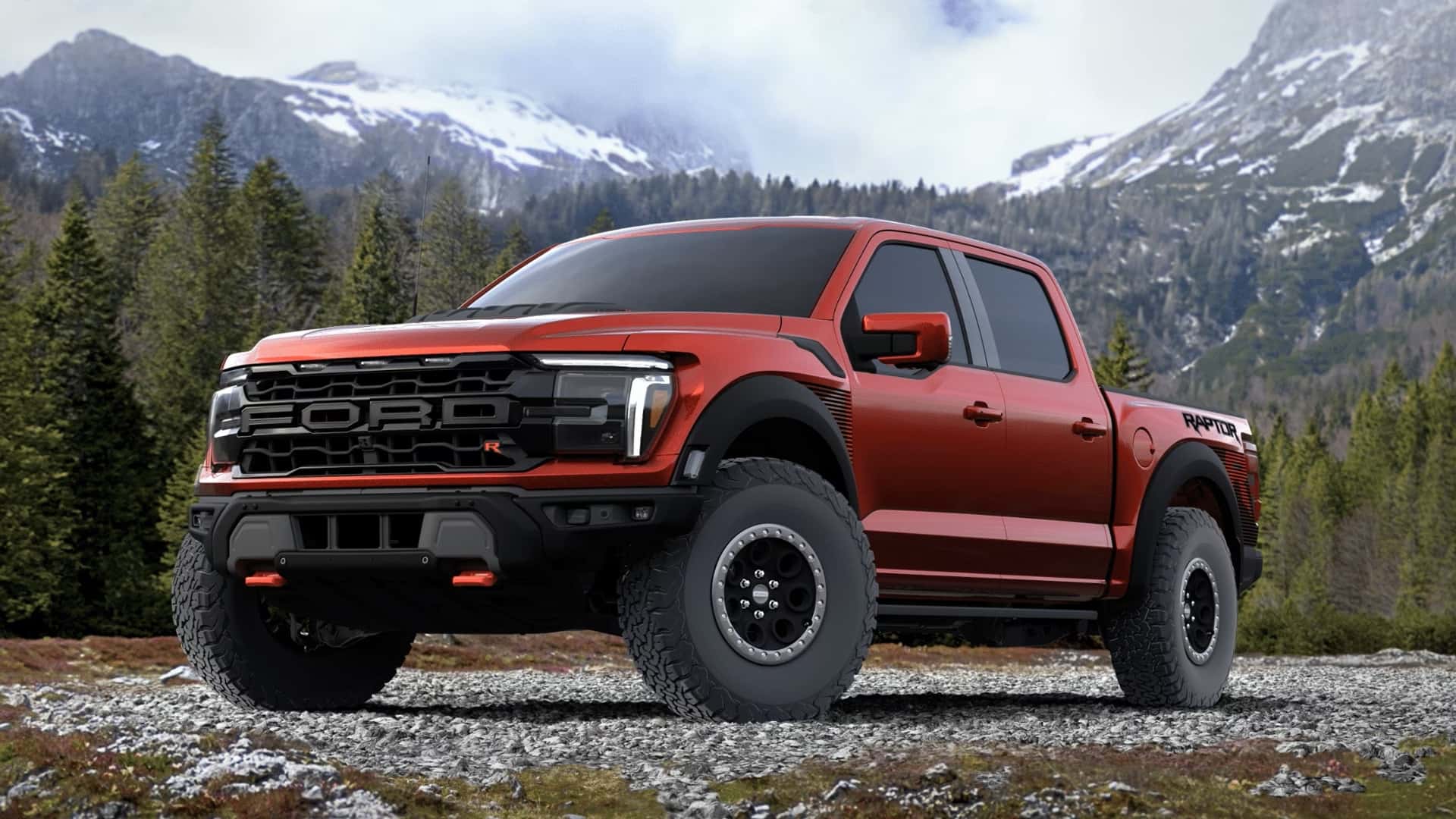
What also helped the ’92–’96 F-150 last was how easy it was to fix. You could pop the hood and see the ground on both sides of the engine. Repairs didn’t require special tools or computer diagnostics, and nearly every town mechanic knew their way around one.
It’s no surprise that these trucks are still in service across farms, construction sites, and small-town fleets today. They were built during a time when durability was the goal—not just an advertising phrase.
If you want a Ford that truly lasts forever, this is the pickup that proves simpler is often better.
3. 2009–2014 Ford F-150 (5.0L V8 “Coyote”)
While many modern trucks struggle with overcomplication and fragile tech, the 2009–2014 Ford F-150 powered by the 5.0L “Coyote” V8 strikes a rare balance—offering the refinement and features of a newer truck with the dependability and resilience of old-school workhorses.
This version of the F-150 is a favorite among owners who want a truck that works hard, drives smooth, and shrugs off high mileage with confidence.
Introduced in 2011 within this generation, the 5.0L Coyote V8—originally developed for the Mustang—was adapted for truck duty with more low-end torque and robust internals.
Despite being a dual overhead cam design, it has proven to be remarkably durable. It’s chain-driven, doesn’t suffer from timing issues like some competitors, and can run well into the 300,000-mile range with regular oil changes.
Best of all, it avoids the turbocharging of EcoBoost models and the cylinder deactivation of GM’s trucks—two common failure points in modern V8s.
The six-speed automatic (6R80) paired with the 5.0L is another highlight. Built with input from ZF, this transmission is strong, smooth, and long-lasting—handling towing and stop-and-go traffic with ease. When maintained properly, it’s not unusual to see it last 250,000+ miles without a rebuild.
Chassis and suspension-wise, the 2009–2014 F-150 introduced refinements like a fully boxed frame and upgraded front suspension components while maintaining the toughness Ford was known for. Ride quality improved dramatically over earlier models without sacrificing durability.

The 5.0L models tend to avoid many of the issues that plagued the EcoBoost variants of the same era—such as turbo carbon buildup and intercooler condensation. They also bypassed the spark plug nightmare associated with the 5.4L Triton engines from the previous generation.
Inside, these F-150s offer comfortable, spacious cabins with practical layouts. Yes, some models had minor electronic quirks, but they rarely affected drivability or core reliability.
If you’re looking for a modern F-150 that delivers on longevity, the 2009–2014 models with the 5.0L V8 offer the best of both worlds. They’re rugged, capable, and far more mechanically forgiving than many of today’s tech-heavy alternatives.
4. 1987–1991 Ford F-250 HD (7.5L 460 V8 or 7.3L IDI Diesel)
The 1987–1991 Ford F-250 HD is a relic from a time when pickups were built with thick steel, minimal electronics, and brute-force engineering.
These heavy-duty trucks weren’t designed to impress at stoplights—they were made to haul, tow, and survive in the toughest conditions.
Whether equipped with the massive 7.5-liter (460 ci) gasoline V8 or the 7.3-liter IDI (indirect-injection) diesel, this F-250 has earned a legendary reputation for being nearly indestructible.
The 7.5L V8 is a monster of an engine—producing loads of torque and built with simplicity in mind. It’s carbureted (later models got fuel injection), easy to service, and capable of towing heavy loads without strain.
While it’s not fuel efficient by any stretch, it compensates with mechanical longevity. With routine maintenance, it’s not uncommon to see these engines eclipse 300,000 miles, particularly in fleet or agricultural use.
On the diesel side, the 7.3L IDI (pre-Power Stroke) is equally respected. Built by International Harvester, this engine is praised for its mechanical injection system, ease of repair, and raw toughness. Unlike newer diesels loaded with emissions equipment, this one doesn’t choke on DEF sensors or clogged DPFs—it just runs.
The F-250 HD frame was overbuilt, featuring beefy leaf springs, solid axles (Dana 60s on 4x4s), and a suspension system that could take real abuse. These trucks were often sold as plow rigs, farm haulers, and utility vehicles—roles they still serve in today.

The transmissions, whether manual (T18, ZF-5) or automatic (C6), were similarly stout. The C6, in particular, is revered as one of Ford’s most durable automatics—simple, fluid-cooled, and nearly unkillable with basic care.
Rust could be an issue, especially in northern climates, but the core mechanicals often outlived the body. Many of these F-250 HDs are still in use today, particularly in rural America, where reliability is more important than tech.
If you want a Ford that will outlive its owner and doesn’t rely on electronics to run, the 1987–1991 F-250 HD is a living fossil—and one that still gets the job done.
5. 2001–2003 Ford F-150 (4.6L V8)
Often overshadowed by its 5.4L Triton sibling, the 2001–2003 Ford F-150 equipped with the smaller 4.6-liter V8 stands out as one of the most reliable light-duty trucks of its era.
While this generation of F-150 (known as the 10th generation) sometimes draws criticism for its styling or the infamous spark plug blowout issues in the 5.4L, the 4.6L version quietly built a reputation for long-term durability and low-cost ownership.
The 4.6L Modular V8, originally developed in the early 1990s, had already proven itself in Crown Victorias, Mustangs, and Lincoln Town Cars before finding a home in the F-150.
Known for its smoothness and longevity, the engine has a reputation for crossing the 300,000-mile mark with minimal internal work.
Unlike the problematic 5.4L, the 4.6L didn’t suffer from widespread timing chain or cam phaser issues. It was a smaller, less powerful engine—but it was reliable and consistent.
These F-150s were often used as fleet trucks or daily workhorses for contractors, handymen, and delivery services. Their success came from a simple formula: sturdy frames, easy-to-fix components, and an engine that rarely quit.
The transmissions (especially the 4R70W automatic) were also dependable and easy to service, making the truck as a whole resilient in both rural and urban use.
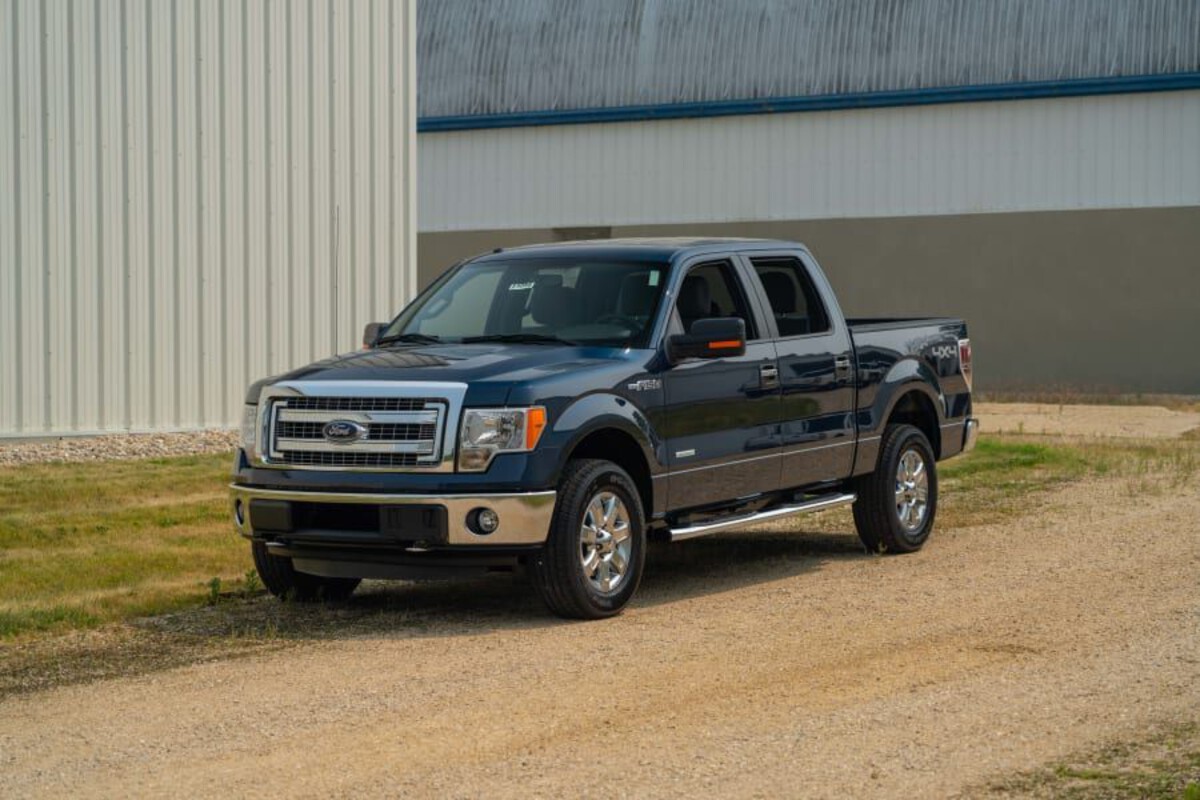
The interior was utilitarian, with durable materials and controls that didn’t fall apart under hard use. Even base models had strong HVAC systems, tough seat fabrics, and practical layouts that made them ideal for job sites.
Another key strength? Affordability of ownership. Replacement parts are everywhere, repair costs are low, and nearly any mechanic can work on them. This has kept many of these trucks on the road well into their third decade.
Sure, the ride is a bit floaty by today’s standards and the tech is nonexistent. But if you care more about dependability than touchscreen size, the 4.6L F-150 from the early 2000s is a fantastic choice. It’s not flashy—but it always starts, always works, and rarely asks for anything more than basic maintenance.
5 Ford F-Series That Constantly Fail
For every legendary Ford F-Series that earns praise for lasting hundreds of thousands of miles, there’s another that leaves owners frustrated, mechanics shaking their heads, and resale values in the gutter.
While the F-Series brand has built its reputation on toughness, not every model or engine has lived up to that standard.
In fact, some years and trims have been plagued by engineering shortcuts, premature failures, or design flaws that make them among the least dependable pickups in Ford’s history.
These aren’t just minor hiccups or isolated issues. The F-Series models featured in this list are known for repeated, costly problems—whether it’s chronic transmission failures, engine defects, electrical gremlins, or structural weaknesses.
And many of these issues appear well before 100,000 miles, which is a black mark for a vehicle marketed as “Built Ford Tough.”
Sometimes the problems stem from trying to keep up with competitors in terms of fuel economy or innovation, leading to under-tested turbocharging or electronic systems.
Other times, it’s simply poor execution—engines prone to catastrophic failure, or components that require expensive labor just to fix routine problems.
This list highlights five F-Series models that consistently disappoint. Whether due to flawed drivetrains, weak reliability records, or parts that self-destruct under pressure, these trucks serve as cautionary tales. They may have looked good on the lot, but real-world use quickly exposed their faults.
We’re covering these models not to bash Ford, but to inform buyers, owners, and enthusiasts who need to know which F-Series to approach with caution. In a lineup as long and varied as the F-Series, there are bound to be low points.
Let’s dig into the F-Series trucks that have earned a reputation not for how far they go—but for how often they break down.
1. 2004–2006 Ford F-150 (5.4L Triton V8)
Few engines have done more to damage Ford’s reputation for truck reliability than the 5.4L 3-valve Triton V8 found in the 2004–2006 Ford F-150.
On paper, it seemed like a solid evolution of the Modular V8 family—more power, modern valvetrain, and better fuel economy. But in reality, it turned out to be one of the most failure-prone and frustrating engines Ford ever installed in its best-selling truck.
Let’s start with the infamous spark plug issue. The 5.4L Triton used a unique two-piece spark plug design that was notoriously prone to breaking off inside the cylinder head during removal. Even seasoned mechanics dreaded routine tune-ups, which could easily turn into multi-hour extraction jobs or head replacements.
Ford eventually issued a technical service bulletin, but the damage to owner confidence was already done.
Then there were the cam phaser and timing chain problems. The 3-valve version of the engine relied on variable valve timing to boost efficiency. Unfortunately, the phasers were fragile and noisy, especially as the engine aged.
Many owners reported loud “knocking” or “diesel-like” clatter at idle, usually followed by expensive timing chain or VCT solenoid replacements—sometimes before 100,000 miles.
Oil pressure issues were another frequent complaint. The Triton’s oil pump, combined with the complexity of the phaser system, often led to poor lubrication at idle. Add in plastic timing chain guides that wore out quickly, and it’s a recipe for high repair bills.
It doesn’t stop with the engine. The 4R75E automatic transmission, while decent in earlier applications, also had durability issues when paired with the heavier and more powerful 5.4L trucks. Torque converter shudder, delayed engagement, and premature failure were all too common.
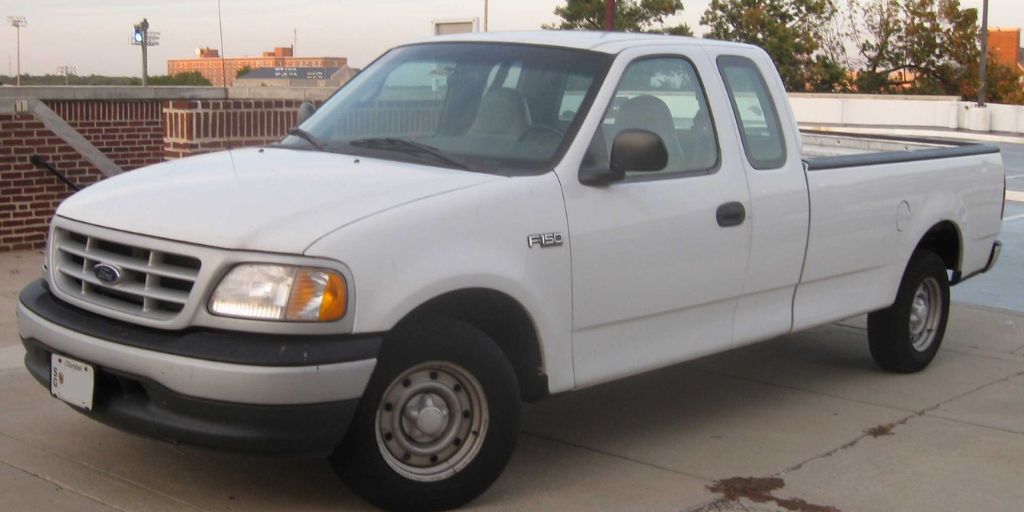
Even basic repairs were a challenge. The tightly packed engine bay and complex systems meant that simple maintenance jobs took hours and often required special tools. Labor costs piled up fast, and many owners ended up unloading their trucks rather than keep pouring money into repairs.
The 2004–2006 F-150 with the 5.4L Triton was meant to modernize Ford’s flagship truck. Instead, it became a cautionary tale—one that many Ford loyalists haven’t forgotten.
2. 2011–2016 Ford F-150 (3.5L EcoBoost V6)
Ford’s introduction of the 3.5-liter EcoBoost V6 in the 2011–2016 F-150 marked a bold shift toward turbocharging and improved fuel economy.
While the EcoBoost engine offers impressive power and towing capacity, it has developed a reputation for reliability issues that plague many owners and mechanics alike.
One of the most notorious problems is carbon buildup on the intake valves. Unlike traditional port fuel injection engines, the EcoBoost’s direct injection system sprays fuel directly into the combustion chamber, bypassing the intake valves.
This means the valves don’t get cleaned by fuel additives, causing carbon deposits to accumulate rapidly, leading to rough idling, loss of power, and misfires. Addressing this buildup often requires costly walnut shell blasting—a labor-intensive and expensive service that can cost thousands over time.
The turbochargers themselves, while powerful, have been prone to premature failure. Owners report turbocharger whining, boost leaks, and occasional oil leaks, which can lead to expensive replacements or rebuilds. These components operate under extreme conditions and are sensitive to maintenance lapses.
Coolant leaks and water pump failures are also common on these EcoBoost engines, often leading to overheating and even engine damage if not caught early.
Some trucks have suffered timing chain stretch or tensioner failures, which can cause catastrophic engine damage.
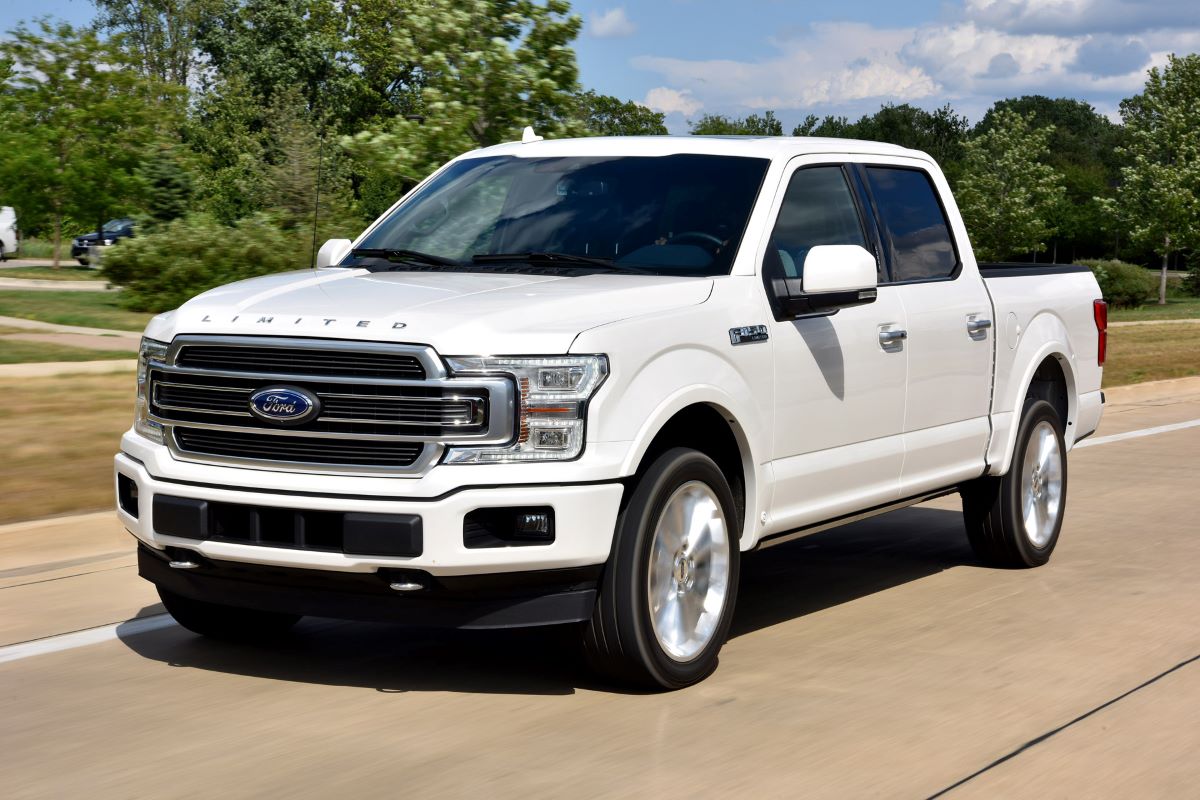
The EcoBoost’s complex engine management software sometimes leads to sensor errors or false warnings, frustrating drivers and increasing trips to dealerships for diagnostic resets or software updates.
Additionally, pairing the turbocharged V6 with the 6R80 automatic transmission has introduced its own issues, including transmission slipping, rough shifts, and premature wear, especially in trucks used for heavy towing or commercial purposes.
While the 3.5L EcoBoost offers undeniable performance and fuel savings, its complexity and sensitivity have led to frequent failures that undermine Ford’s “Built Ford Tough” reputation for this generation.
3. 1997–1998 Ford F-150 (4.2L Essex V6)
When Ford redesigned the F-150 for 1997, it marked the dawn of the 10th generation and introduced a sleeker, more aerodynamic look.
While the design was modern, the entry-level engine—the 4.2L Essex V6—was anything but durable. Found in many 1997–1998 base models, this engine is now widely regarded as one of the most failure-prone powerplants in F-Series history.
The biggest and most catastrophic flaw was the intake manifold gasket failure. The gaskets were poorly designed and prone to leaking coolant internally, often without obvious external signs.
Many engines were lost to hydrolocking—where coolant leaked into the cylinders and prevented the engine from turning over, causing bent rods, cracked heads, or total failure. By the time symptoms appeared, it was often too late.
Another notorious weakness of the 4.2L V6 was the timing chain and oil pump reliability. While the engine wasn’t as complex as the later Triton V8s, it still suffered from premature wear in the timing system, and oil starvation often led to bottom-end failure before 100,000 miles.
The engine also lacked sufficient torque for real truck duty. While it might have been fine for lightweight commuting or basic hauling, it struggled with towing or heavy loads.
Many fleet and private owners found themselves pushing the engine harder than it was designed to handle—leading to accelerated wear and failure.
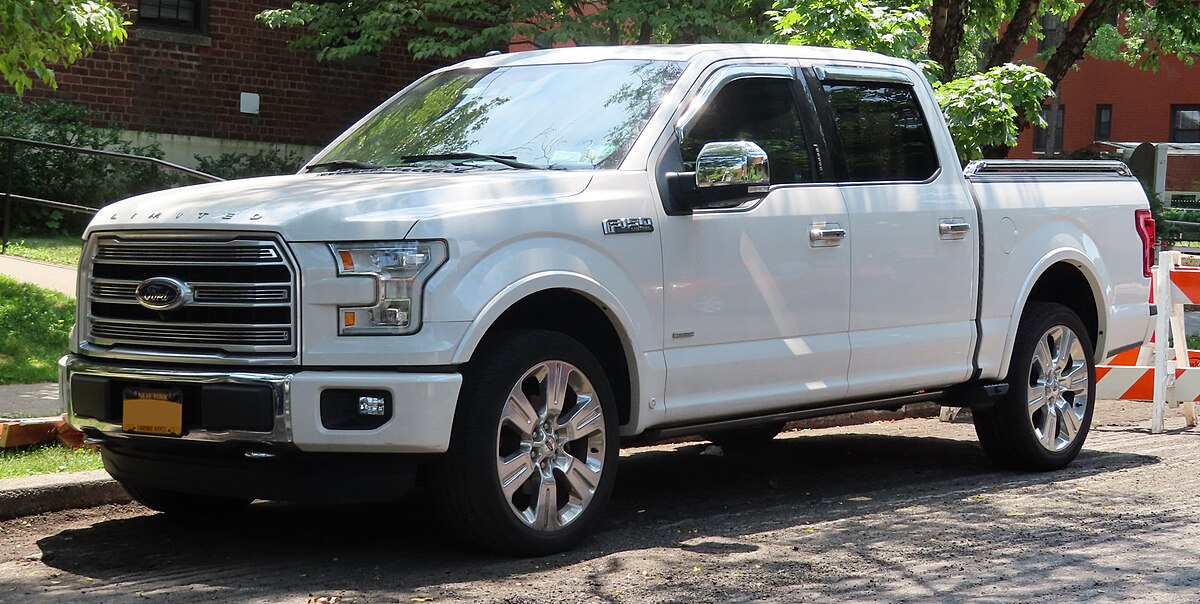
Transmissions mated to the 4.2L, particularly the 4R70W automatic, fared better, but still didn’t help the overall package. When combined with the underpowered engine and early failures, these trucks developed a reputation for poor resale value and frequent shop visits.
On top of that, this early 10th-gen F-150 suffered from build quality inconsistencies, including body panel rust, flimsy interiors, and electrical quirks—further compounding reliability concerns.
While later versions of the 4.2L engine were revised and improved, the 1997–1998 models damaged the engine’s—and Ford’s—reputation in the light-duty truck space.
Today, they are mostly avoided by used truck buyers, and even diehard Ford fans admit: this is one F-Series model to steer clear of.
4. 2005–2007 Ford F-250/F-350 Super Duty (6.0L Power Stroke Diesel)
Few trucks have sparked as much disappointment in the diesel world as the 2005–2007 Ford F-250 and F-350 Super Duty equipped with the 6.0L Power Stroke engine.
Introduced as a follow-up to the beloved 7.3L Power Stroke, the 6.0L looked promising on paper: more horsepower, more torque, and modern emissions compliance. But real-world performance told a different story—one plagued with chronic and expensive failures.
The 6.0L Power Stroke, built by Navistar, was riddled with design flaws. Chief among them was the EGR (Exhaust Gas Recirculation) system, which frequently clogged, leaked coolant, or caused overheating.
This often led to head gasket failures, exacerbated by weak torque-to-yield head bolts that couldn’t keep up with the engine’s pressure. Blown head gaskets became a signature issue, usually requiring a full cab-off repair that could cost over $5,000.
The high-pressure oil system, crucial for injection timing, also suffered from failures. Faulty HPOP (high-pressure oil pumps), standpipes, dummy plugs, and STC fittings routinely failed, causing hard starts or complete no-start conditions. Diagnosing these issues was time-consuming and expensive, often requiring deep internal work.
Turbocharger issues were also widespread. The variable geometry turbo (VGT) would seize up due to carbon buildup or sticking vanes, resulting in power loss and poor fuel economy.
And when you combine all of the above with frequent sensor and wiring issues, you get a truck that can feel like it’s always in limp mode or waiting on a tow truck.
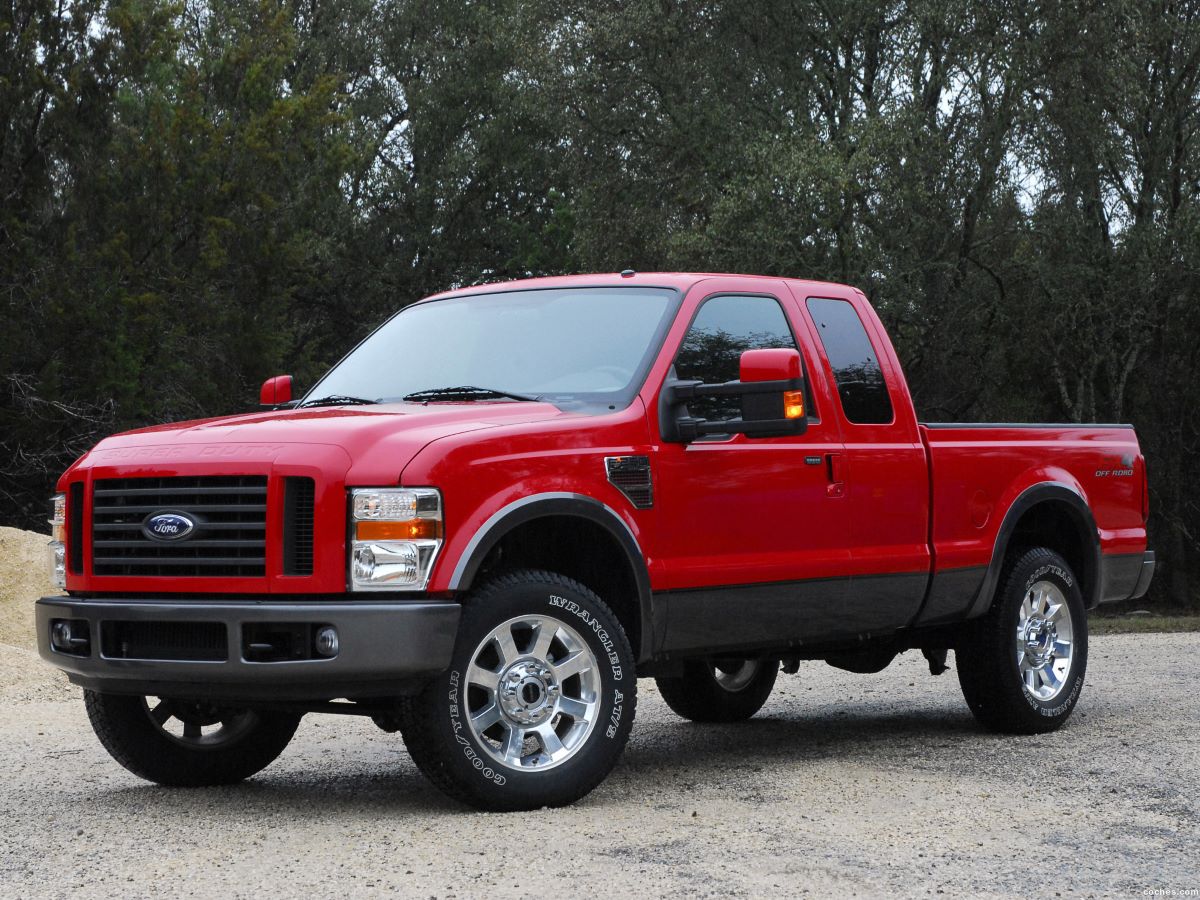
Despite being built on a rugged Super Duty platform with a strong chassis and capable suspension, the 6.0L diesel made these trucks a nightmare to own without significant preventative maintenance or expensive “bulletproofing” modifications.
Some owners managed to make the engine last by replacing multiple components proactively—but the cost was extreme.
Today, the 6.0L Super Duty has become a cautionary tale. Its resale value plummeted compared to the 7.3L predecessor or even the later 6.7L.
Unless it’s already been heavily modified and serviced, this truck is considered one of the least reliable Ford heavy-duty models ever built.
5. 2018–2020 Ford F-150 (5.0L Coyote V8)
While the 5.0L “Coyote” V8 earned praise in earlier F-150s for its durability, the updated version used in the 2018–2020 models introduced a host of new issues that surprised even Ford loyalists.
Instead of building on a solid foundation, this revised engine design left many owners dealing with problems far earlier than expected—especially for a truck marketed as both powerful and reliable.
The biggest issue? Excessive oil consumption. Countless owners have reported needing to add a quart of oil every 1,000 to 2,000 miles—sometimes even more frequently. This wasn’t limited to high-mileage trucks either; many near-new vehicles were affected.
The problem stems from revised piston rings and cylinder wall coatings that allow oil to bypass and burn off during normal operation. Ford issued Technical Service Bulletins (TSBs) and updated programming, but in many cases, full engine rebuilds or short block replacements were required.
In some cases, oil consumption led to low oil pressure warnings, misfires, and premature engine wear. For a modern truck engine expected to last 200,000+ miles, that’s a serious red flag—especially in an era when many buyers finance trucks over long loan terms.
Compounding the issue was Ford’s shift to a dual fuel injection system, combining direct and port injection for efficiency. While innovative, this added more complexity and points of failure, with owners experiencing injector issues, rough idling, and fuel trim problems—particularly in colder climates.
The accompanying 10-speed automatic transmission, though praised for performance when working properly, also saw its share of hiccups during this time.
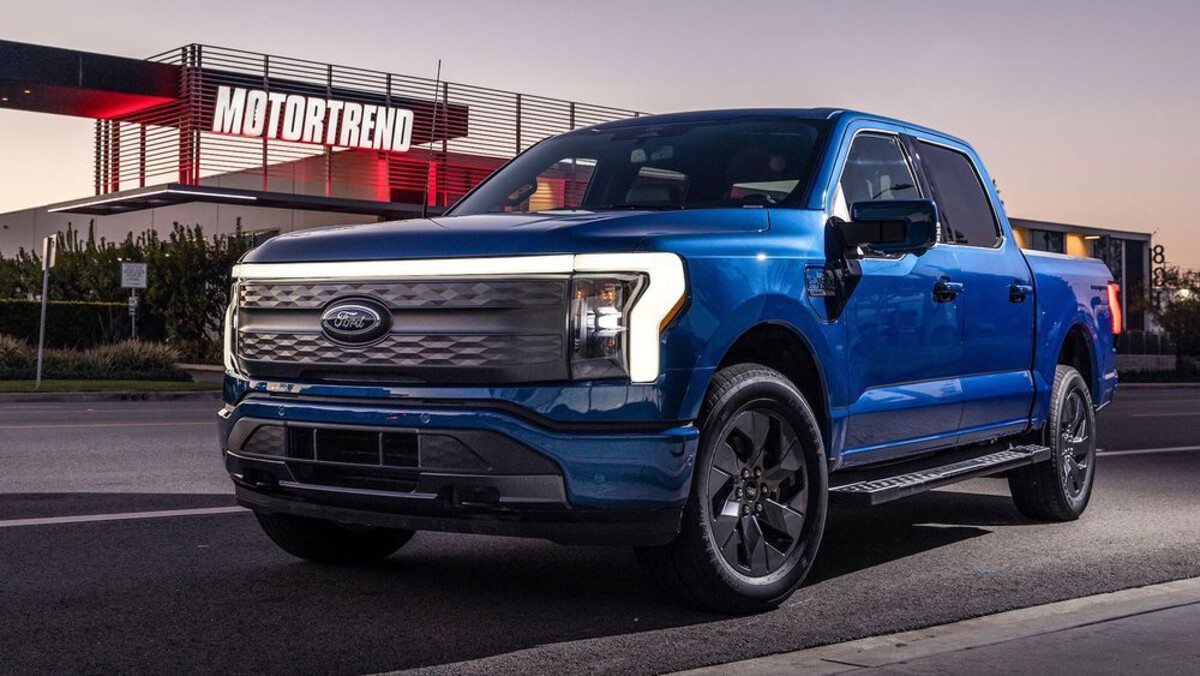
Some owners reported harsh shifts, clunking, and hesitation, especially during downshifts or when towing. Ford’s efforts to reduce fuel consumption and improve acceleration came at the cost of long-term smoothness and transmission reliability.
Even though these F-150s ride well, offer great tech, and have solid towing specs on paper, their powertrain problems make them a risky buy for anyone expecting traditional Ford toughness. For fleet use or high-mileage ownership, the oil-burning 5.0L of this era falls far short of the Coyote’s previous reputation.
Unless you’re willing to monitor oil like a hawk and gamble on a fix, the 2018–2020 5.0L F-150 is a modern F-Series that too often disappoints.
The Ford F-Series is an institution in the truck world—celebrated for its longevity, capability, and sheer presence on American roads. But as we’ve seen, not every F-Series model lives up to that reputation.
Some builds have gone on to serve their owners faithfully for decades, while others became headaches well before the odometer hit six figures.
That split legacy tells us an important truth: under the same badge, Ford has delivered both some of the most durable trucks ever made and some of the most failure-prone.
The five F-Series trucks that “last forever” stand as examples of when Ford got it right. The legendary 7.3L Power Stroke Super Duty, the indestructible 4.9L inline-six F-150, and even the modern 5.0L Coyote (in the right years) are trusted because of their mechanical simplicity, proven components, and long-term resilience.
These trucks are still pulling trailers, climbing job sites, and ferrying families decades after leaving the factory.
On the other hand, models like the 5.4L Triton F-150 and the 6.0L Power Stroke Super Duty show what happens when complexity and cost-cutting meet poor execution.
Spark plug disasters, turbo issues, carbon buildup, and oil consumption aren’t just inconveniences—they’re dealbreakers for the people who rely on their trucks day in and day out.
The lesson here isn’t to avoid the F-Series altogether—far from it. The line still includes some of the longest-lasting and best-supported trucks on the market. But it is a reminder to choose carefully.
Not all engines are created equal, and not every model year represents Ford at its best. Knowing which trucks to seek out—and which to steer clear of—can mean the difference between owning a trusted workhorse and owning a money pit.
For used buyers, fleet operators, and truck enthusiasts alike, this guide is more than just a history lesson. It’s a roadmap to smarter ownership.
Because in the world of pickups, what’s under the hood and behind the badge matters—but what happens after 100,000 miles matters most of all.
Whether you want a truck that lasts a lifetime—or just want to avoid the ones that don’t—now you know where to look.
Also Read: 5 Cars With Zero Depreciation Over 5 Years and 5 That Drop Instantly

